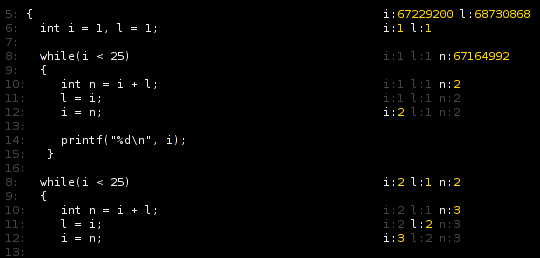Robert O’Callahan‘s Chronicle-Recorder is one of the most exciting debugging tools to come down the road ever. In order to help me track down my PyXPCOM problem that has been a stumbling block to full Thunderbird integration, I’ve laid the groundwork for a nice Python-based interface to chronicle-query.
You can find it in a bzr repository at http://www.visophyte.org/rev_control/bzr/chroniquery/
It depends on some mods I’ve made to chronicle-recorder which can either be found in my (st)git repository (git-svnimport’ed) at http://www.visophyte.org/rev_control/git/chronicle-recorder.git/ on the acs-base branch. I have no idea how to have someone branch the repository and get stgit to actually understand the patches, so I have also exported the patches to http://www.visophyte.org/rev_control/patches/chronicle-recorder/. They should apply cleanly to rev 13/15 of the trunk. In a nutshell, the patches make things work with a somewhat-up-to-date Ubuntu gutsy (7.10) install, add the ability to retrieve information on compilation units including their memory offsets, add the ability to get source line information (with some overkill on determining the end of the current ‘line’), and a bugfix for negative line offsets.
It’s my understanding from roc’s blog that he’s been working on a proper debugger interface, so some of these patches may be redundant or otherwise rendered moot.
The picture above is a screenshot of Firefox rendering the styled HTML output of chronisole.py run against the loopy.c program in the chroniquery examples dir. (Click on the picture to go to the HTML.) It’s like a fibonacci generator, but it’s not. If you run chronisole in a terminal without the HTML args, it will output the equivalent, but you need to have a 256-color xterm. To summarize its actions, it finds all the compilation units residing in the executable which have low_pc/high_pc info and uses that as the basis of the ranges of interest for an instruction scan. It loops over the source-lines as they are executed in sequence, grabs the lines, and looks up the values of the locals just after the source line completes execution. If each local’s value differs or was not in the previously executed line’s locals, it gets to be yellow, otherwise it is a subtle color.

